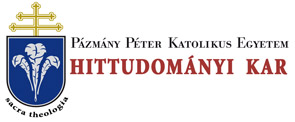Folia Theologica et Canonica 4. 26/18 (2015)
IUS CANONICUM - Szabolcs Anzelm Szuromi, O.Praem., The systematic development of the Liturgy of Hours during the first centuries - based on the Jewish and Christian tradition
158 SZABOLCS ANZELM SZUROMI, O.PRAEM. 2. Interpretation of Psalms by the patristic authors prior the institutionalized Divine Office Besides the narration of the Gospels and the Acts of Apostles in the written heritage of the early customs of the early Church we can find the practice of praying in the Didaché - i.e. The teaching of the Twelve Apostles -, as the oldest canonical collection, which had been composed at the very beginning of the 2nd century in Syria or Palestine.28 Its text recommend the "Prayers” at three times on Sundays (Did. 8,3). Based on the context it would seem that the meaning of “Prayers” is the praying of the Psalms.29 We cannot list every single pseudo-apostolic collection, conciliar collection30, writing of significant patristic author from the first four centuries which contain rules, references, recommendations, instructions, etc. regarding to the structure of the daily prayers, including in particular those original sources which references very possible pertain to the structuralized praying of the Psalms, sometimes already supplemented by other Biblical texts or hymns. Nevertheless, we must indicate here the Traditio Apostolca (very early 3rd century)31; St. Clement of Alexandria (tabout 215) and his Stromateis (Stromata); and St. Cyprian’s work (f258)32 33 34, entitled De oratio dominical However, it is important to dedicate more attention to St. Hilary of Poitiers and St. Ambrose of Milan. St. Hilary of Poitiers (f368) who had profound Biblical studies, dedicated one of the most important exegetical work to the analysis of the Psalms, i.e. Commentary to the Psalms,M This particular work had got important role in the patristic literature regarding the Psalms, especially through St. Jerome's (f420) references. He fruitfully used St. Hilary’s commentary, basically for the interpretation of Psalms 9, 13, 14, 63, 64, 65, 66, 67, 68, 69 and 91.35 Concerning these Biblical texts Jerome cited extensive descriptions from St. Hilary, therefore we can lay down that well considered opinion, that St. Jerome’s comments to the Psalms and his sermos on the same topic are essentially dependent 28 Edition: Rordorf, W. - Tuillier, A. (ed.), La Didaché (Sources Chrétiennes 248), Paris 1978. 29 OURY, G-M., Office Divin - I. En Occident, 687. 30 In detailed cf. Gaudemet, J., Les sources du droit de l’Église en Occident du IIe au VIIe siècle, Paris 1985. 15-28. 31 Edition: Botte, B. (ed.), Im tradition apostolique de Saint Hippolyte. Essai de reconstruction (Liturgiewissenschaftliche Quellen und Forsschungen 39), Münster 1989.' 32 Hoffmann, A.. Kirchliche Strukturen und Römisches Recht hei Cyprian von Karthago (Rechtsund Staatswissenschafliche Veröffentllichungen der Görres-Gesellschaft, Neue Folge 92), Pa- derborn-München-Wien-Zürich 2000. 22-32. 33 Corpus christianorum. Series latina (Hereafter: CCL), 3/A. Turnhout 1976. 34 di Berardino, A. - Quasten, J. (dir.), Patrologia (Biblioteca de autores cristianos 422), III: La edad de oro de la literatura patristica latina, Madrid 1981.42-45,56,58-60. Critical edition: Corpus scriptorum ecclesiasticorum Latinorum (Hereafter: CSEL), XXII. Vindobonae 1891. 35 di Berardino, A. - Quasten, J. (dir.), Patrologia, III. 58.
